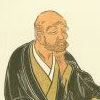Japan's new jury system
Wednesday, January 18th, 2006
Japan has inexplicably decided to experiment with copying one of the worst aspects of the American legal system: juries.
According to the article, “a jury is one of the most important protections of a democracy.” Really? A random group of biased, cherrypicked, uneducated people off the street are going to decide on matters of life and death? For every high-profile case where the jury obviously got it wrong, how many hundreds or thousands do we never hear of?
The Supreme Court recently ruled that it was OK for relatives of a murder victim to sit in court with big buttons featuring the face of the deceased, and that this did not unduly influence the jury. (Carey vs. Musladin.) Maybe or maybe not. But this case raises the deeper issue of how we can possibly know what does or does not influence a jury. Do they really get “innocent until proven guilty”, or even “beyond a reasonable doubt”? I doubt it.
The Founders were quite certain that the jury system was important. After all, they wrote it into the Bill of Rights not once, not twice, but three times. But let’s remember: they were reacting to very particular abuses of the judicial system under colonial English rule. Juries were the only way to absolutely prevent such misuse of government power. And recall, the jurors back then were landed and educated.
There’s no need for a jury system in America today. We call up people with no expertise whatsoever and waste their time to help us condemn one of our underclass to prison for a decade for possessing a rock of cocaine.
There are those who say juries form a key part of the democratic system. The author of the NYT article goes so far as to say “if Japan’s effort to introduce a jury system fails, democracy movements elsewhere in Asia will suffer a serious setback.” But representational democracy and the jury system are similar only in the superficial sense that they involve citizen participation.
The article goes on to say that “it’s hard to imagine how Americans could fulfill their role as democracy advocates any better than by helping the Japanese become jurors.” Well, I don’t think the Japanese need any lessons from us in democracy. If we really wanted to help them become more democratic, why not push for a nationwide referendum on the US troops in Okinawa and elsehwere in Japan, then insist that the two governments actually abide by the results?

 What does it mean to say someone is divine, a living God? That they share God’s infallibility, or compassion, or wisdom, or omniscience, or power?
What does it mean to say someone is divine, a living God? That they share God’s infallibility, or compassion, or wisdom, or omniscience, or power? Look up the word “think” in an English-Japanese dictionary and you’ll find two main alternatives: “kangaeru” and “omou”.
Look up the word “think” in an English-Japanese dictionary and you’ll find two main alternatives: “kangaeru” and “omou”. Full moon overhead
Full moon overhead Dogen keeps talking about shinjin , inevitably translated as “body and mind”. The fascicle of Shōbō Genzō named Shinjin Gakudō (身心å¦é?“) is translated by Tanahashi as Body-and-Mind Study of the Way . The word also forms a part of Dogen’s trademark phrase shinjin datsuraku, of course, which in an earlier post I
Dogen keeps talking about shinjin , inevitably translated as “body and mind”. The fascicle of Shōbō Genzō named Shinjin Gakudō (身心å¦é?“) is translated by Tanahashi as Body-and-Mind Study of the Way . The word also forms a part of Dogen’s trademark phrase shinjin datsuraku, of course, which in an earlier post I  I’m extremely pleased to announce the on-line availability of my important proposal for a major reform of Japanese orthography:
I’m extremely pleased to announce the on-line availability of my important proposal for a major reform of Japanese orthography:  I still remember the first time I saw and held a
I still remember the first time I saw and held a  But the Japanese also did not overlook the entrails, which they extract, salt, and cure (see picture). The result: konowata (æµ·é¼ è…¸), considered one of the three major chinmi (delicacies) of Japan.
But the Japanese also did not overlook the entrails, which they extract, salt, and cure (see picture). The result: konowata (æµ·é¼ è…¸), considered one of the three major chinmi (delicacies) of Japan. I’ve often thought over the years of coming up with a new ideographic written language. Now I find a man named Charles K. Bliss has already done this, creating something called Blissymbols (or “Semantography”).
I’ve often thought over the years of coming up with a new ideographic written language. Now I find a man named Charles K. Bliss has already done this, creating something called Blissymbols (or “Semantography”).